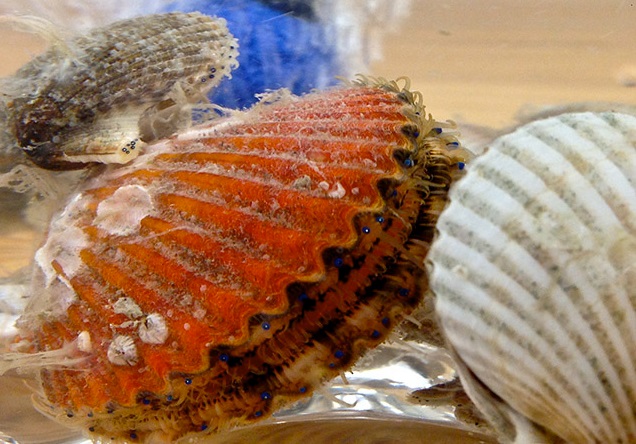 Algal blooms, including red tides, are natural occurrences. They are part of the complex life cycles and ecological balance of our marine ecosystem. However, excess nutrient pollutants, such as nitrogen and phosphorus, from human activity can disrupt the nature’s balance creating devastating blooms in our waterways that are more intense, larger, and last longer.
Algal blooms, including red tides, are natural occurrences. They are part of the complex life cycles and ecological balance of our marine ecosystem. However, excess nutrient pollutants, such as nitrogen and phosphorus, from human activity can disrupt the nature’s balance creating devastating blooms in our waterways that are more intense, larger, and last longer.
Protecting our bays and the Gulf of Mexico from excess nutrient pollution is a year round job, and everyone has a role to play. We can and must be better stewards. It starts in our homes and communities and extends to civil servants and our elected officials. A healthy bay is everybody’s business.
Shellfish Are One Solution
Florida red tides start out in the Gulf of Mexico, but they can feed on excess nutrients in our bays from rivers and runoff to fuel their growth. Sarasota Bay Watch believes that one solution to the problem of excess nutrients is to repopulate our waterways with shellfish like, clams, oysters and scallops.
“Bivalve shellfish are an important prey item for a diversity of marine life in Sarasota Bay including sportfish, stingrays and shorebirds. Simply by feeding and growing, they filter water, sequester carbon and assist with nutrient removal. More bivalves in the Bay is a good thing!”
Angela Collins, Ph.D., Florida Sea Grant
Native clams, once so abundant in the bay, actually eat red tide. Each clam is a workhorse, filtering over 10 gallons of water per day for 30 years or more. And their thick shells protect them from most predators. Unfortunately, we no longer have many of these natural cleaners left in our waters.
The red tide organism, K. brevis, thrives in warm waters with excess nutrients, which can lead to toxic and economically damaging blooms. The extreme and extended red tide we recently experienced underscores the urgent need to repopulate the bay with shellfish, particularly clams. Restoring shellfish to Sarasota Bay is one way to help make the bay be more resilient to challenges like excess nutrient run-off and algae blooms.
“Restoration of an estuary is a daunting task that requires the cooperation of many partners to be sustained over extended periods of time. Sarasota Bay Watch events have raised awareness for thousands, and their persistent efforts have undoubtedly contributed to the maintenance of this tenuous scallop population in southwest Florida.”
“I also agree it’s really sensible to start (restoring) clams . . . the more we restore the big recognizable critters, the healthier the system and the more small, often unnoticed, fauna will also recover.”
Dr. Steve Geiger, Research Scientist, Fish & Wildlife Research Institute, Florida Fish & Wildlife Conservation Commission.
This is why Sarasota Bay Watch, and our army of community volunteers, are working to restore clams and scallops to the bay – rebuilding shellfish populations may be one of the fastest and most cost effective ways to mitigate red tide impacts, both environmental and economic. In addition, these shellfish sequester loads of carbon and provide abundant food for diverse marine life. – clam restoration is a win, win, win solution. It is now more important than ever to restore natural shellfish populations to maintain clean water and a healthy bay, as well as a better quality of life for Sarasota’s residents and visitors.
“Restoration of native shellfish populations (oysters, bay scallops and southern quahogs) are an integral part of the mission and activities of the Gulf Shellfish Institute. We will continue to work with entities like Sarasota Bay Watch to provide research support for restoration efforts in west central Florida. Increased shellfish populations will benefit both the local economy and coastal water quality.”
Bruce Barber, Ph.D., Executive Director, Gulf Shellfish Institute
Bay Scallops
1. 105,000,000 scallop larvae (a staggering number for a small all volunteer group, and the largest bay scallop restoration anywhere in Florida);
2. 110,000 juvenile scallops (grown to juvenile size to help increase survivability); and
3. Over 1600 mature, ready-to-spawn adult scallops into the bay in protective cages to avoid predation and to increase likelihood of successful spawning.
Southern Hard Shell Clams
SBW’s native clam restoration pilot project to grow 250,000 young adult clams started in January 2017, took $20,000 and 18 months to complete. The clams were professionally grown near Captiva Pass, south of Boca Grande and the project culminated in a series of harvests from that area, transporting the clams to Sarasota, and releasing them into Sarasota Bay.
Our native hard shell clams survived the severe and persistent red tide, and the whole process from grow out to release went extremely well. Accordingly, SBW now is working to raise more funds and expand the Clam Restoration Program to 1,000,000 clams in the next phase.
If you’d like more information about Sarasota Bay Watch please visit sarasotabaywatch.org
